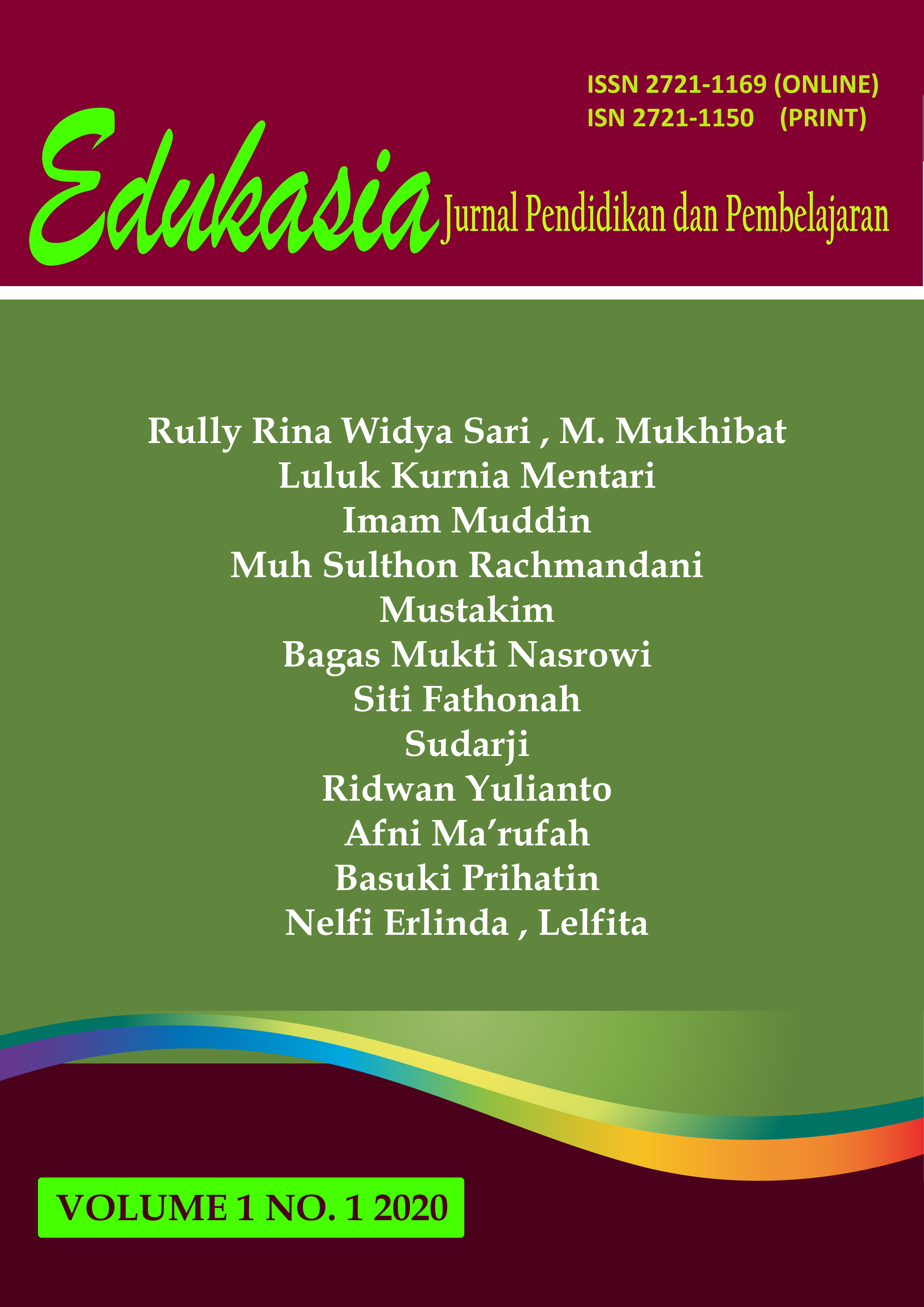IMPLEMENTASI KURIKULUM MATA PELAJARAN PENDIDIKAN AGAMA ISLAM (Upaya Mewujudkan Budaya Religius di Sekolah)
Abstract
The implementation of Islamic education curriculum has been less than optimal in public schools. This results in a moral decline in the younger generation. Answering this problem, religious culture sought to be realized through the implementation of the Islamic religious education curriculum. This study uses a qualitative approach. Data is collected through observation, interviews and documentation. The validity of the data is measured by extension of observation, perseverance of observation, triangulation, and checking. The results of the study show the religious culture in the Integrated Muhammadiyah Elementary School and the Maarif Ponorogo Elementary School, namely the Dhuha prayer, Smile, Salaam, Greetings, shaking hands, tolerance, Dhuhr prayer, tadarus Al-Qur'an, istighosah and do'a together. The implementation of the Islamic religious education curriculum in realizing religious culture at the Integrated Muhammadiyah Elementary School and the Maarif Ponorogo Elementary School is through the process of teaching and learning activities in the classroom and second through extracurricular activities.
Downloads
Please find the rights and licenses in EDUKASIA. By submitting the article/manuscript of the article, the author(s) agree with this policy. No specific document sign-off is required.
1. License
The non-commercial use of the article will be governed by the Creative Commons Attribution license as currently displayed on Creative Commons Attribution-NonCommercial-ShareAlike 4.0 International License.
2. Author(s)' Warranties
The author warrants that the article is original, written by stated author(s), has not been published before, contains no unlawful statements, does not infringe the rights of others, is subject to copyright that is vested exclusively in the author and free of any third party rights, and that any necessary written permissions to quote from other sources have been obtained by the author(s).
3. User/Public Rights
EDUKASIA's spirit is to disseminate articles published are as free as possible. Under the Creative Commons license, EDUKASIA permits users to copy, distribute, display, and perform the work for non-commercial purposes only. Users will also need to attribute authors and EDUKASIA on distributing works in the journal and other media of publications. Unless otherwise stated, the authors are public entities as soon as their articles got published.
4. Rights of Authors
Authors retain all their rights to the published works, such as (but not limited to) the following rights;
- Copyright and other proprietary rights relating to the article, such as patent rights,
- The right to use the substance of the article in own future works, including lectures and books,
- The right to reproduce the article for own purposes,
- The right to self-archive the article,
- The right to enter into separate, additional contractual arrangements for the non-exclusive distribution of the article's published version (e.g., post it to an institutional repository or publish it in a book), with an acknowledgment of its initial publication in this journal (EDUKASIA: Jurnal Pendidikan dan Pembelajaran).
5. Co-Authorship
If the article was jointly prepared by more than one author, any authors submitting the manuscript warrants that he/she has been authorized by all co-authors to be agreed on this copyright and license notice (agreement) on their behalf, and agrees to inform his/her co-authors of the terms of this policy. EDUKASIA will not be held liable for anything that may arise due to the author(s) internal dispute. JOSI will only communicate with the corresponding author.
6. Royalties
Being an open accessed journal and disseminating articles for free under the Creative Commons license term mentioned, author(s) aware that EDUKASIA entitles the author(s) to no royalties or other fees.
7. Miscellaneous
EDUKASIA will publish the article (or have it published) in the journal if the article’s editorial process is successfully completed. EDUKASIA's editors may modify the article to a style of punctuation, spelling, capitalization, referencing and usage that deems appropriate. The author acknowledges that the article may be published so that it will be publicly accessible and such access will be free of charge for the readers as mentioned in point 3.







